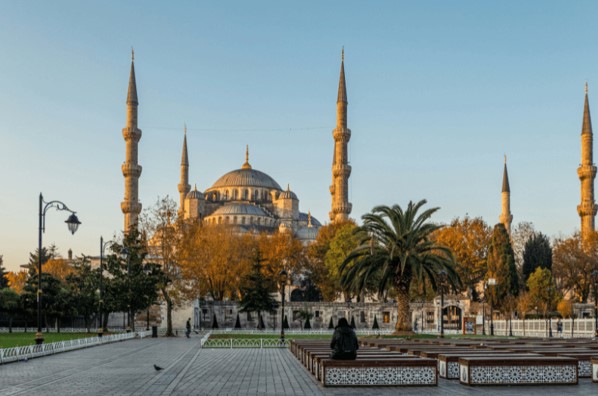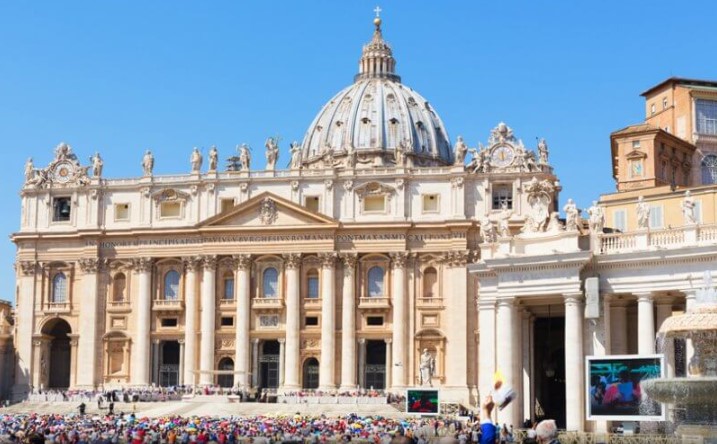You might not think an Instant Pot would be at the top of your summer shopping list. The sweltering heat doesn’t exactly put people in the mood for a hearty stew. But Amazon has managed to help make it into a hot item to buy among consumers in mid-July each year thanks to Prime Day, its now 48-hour deal extravaganza.
As the saying goes, if you build it, they will come, which in Amazon’s case means poof! inventing a shopping holiday out of thin air.
Amazon Prime Day first launched in 2015, initially as a way to celebrate Amazon’s 20th birthday (to the extent companies can have birthdays, I guess). It was a way to reward members of its Prime program, which started in 2005, and to bring consumers into its ecosystem of products and services. It was also a way to pump sales in what is normally an offseason for the company. According to Amazon, consumers across nine countries bought over 34 million items on the first Prime Day, then just 24 hours. It surpassed the number of items sold on Black Friday the year prior, the e-commerce giant’s biggest Black Friday yet at the time.
Today, Amazon Prime Day is one of the biggest shopping events of the year. In 2021, people bought over 250 million items during it. For this year, the numbers aren’t out yet, and it’s unclear how much of an impact inflation and changing consumer habits made, but it is still a big deal. Historically, Amazon says, “Jump,” as in “Shop.” Consumers across America and the world ask, “How high?”
“People everywhere, but Americans in particular, love sales; they love deals,” said Sucharita Kodali, vice president and principal analyst at Forrester. “And if they’re told they’re going to find great deals, they’ll go and look.”
Even if that means looking for a glorified crockpot during one of the hottest months of the year. In 2015, 24,000 Instant Pots were sold on Prime Day. By 2018, that number was 300,000. In 2021, Instant Pot was still among the biggest sellers on Prime Day.
I recognize people make things that are not soups in Instant Pots, but still.
Christmas in July, but for yourself
The idea of a holiday for buying yourself stuff is not unique to Amazon or something Amazon invented. Prime Day was inspired by Alibaba’s Singles Day, on November 11, in China. All sorts of holidays, real and invented by retailers, have become about buying. For some reason, we’ve collectively decided Presidents’ Day is a time for mattress sales. Even Juneteenth has become awkwardly commercialized.
Greg Greeley spent 18 years at Amazon, including running Prime, and oversaw the early Prime Days. He explained to me that while Black Friday and Cyber Monday, for example, were always about gifting to other people, Prime Day had a distinct appeal. “I liked to describe it as our gift to Prime members so they could gift something to themselves.”
Prime Day occupies a space consumers don’t really have to fill but might just kind of want to. It falls between tentpole shopping moments like the holidays and the back-to-school season. It’s also a moment where it feels a bit more like it’s okay to buy just to buy, instead of for a specific purpose — and, maybe, to be a little selfish about it.
“Cultures have been inventing commercial holidays for a very long time,” said Jason Goldberg, chief commerce strategy officer at the advertising firm Publicis. “People are very motivated by price, they’re very motivated by the treasure hunt of a deal, and when clever marketers do a good job of creating this perception that there’s some special reason for a deal, that triggers some cognitive bias that we have.”
As Hilary George-Parkin laid out for The Goods in 2019, sales and deals make consumers feel like they’re getting something special even if they’re not, like they’re getting free money. People can be pushed to buy out of FOMO, and the belief they’ll lose something if they don’t buy now before inventory runs out or the deal ends.
“These deals are structured in such a way that the products that are on deal won’t be there forever,” said Kelly Goldsmith, a behavioral scientist at Vanderbilt. “Scarcity marketing tactics, they’ve been a mainstay of the marketer’s toolkit for a very long time.”
Some consumers head into Prime Day with a clear idea of what they want and hunt for discounts on items they already intend to buy; if not on that specific day, then eventually. Others, however, just buy stuff because they see it and it’s there.
Prime Day is neat for Amazon, medium for a lot of other parties
Whatever deals consumers feel like they’re getting out of Prime Day, the real winner in this is probably Amazon. Even though, as Sebastian Herrera notes in the Wall Street Journal, Prime Day isn’t quite as big of a thing as it once was, it’s still very much a net positive for the company. It helps lift third-quarter sales and brings in billions of dollars. It is also a way to get people to join Prime (though much less so now than at the beginning) and get consumers familiar with and buying Amazon’s products and services.
“In the old days, it was mainly a deal on stuff Amazon was selling, and Amazon could kind of curate it and say, ‘Hey, we’re having a super good deal on Alexa,’” Goldberg said. Now, he said, that’s diminished, and there’s almost too much for consumers to sort through when buying, whether it’s products from Amazon or not. “Today, there’s 10 million Lightning Deals on Prime, and the vast majority of them are for crap nobody wants.”
Prime Day can be a mixed bag for third-party sellers on the platform, Goldberg said. They generally don’t get much notice of the exact dates, making the whole thing logistically challenging, and sellers sometimes wind up discounting so deep to make sales that it hurts their margins. “The reason you would sell something at a loss on Prime Day is to meet a new customer that might buy more stuff from you over time,” he said. Increasingly, that’s not possible on Amazon, as people often just buy from the first listing that comes up instead of going back to a specific seller. “Sellers are increasingly learning that you can’t acquire customers on Amazon; you’re renting customers on Amazon.”
An Amazon spokesperson said Prime Day 2021 was its biggest ever for third-party sellers and that this year customers could shop more products from those sellers than last year. The spokesperson declined to say how much notice of Prime Day sellers get, or address speculation that the company might add another Prime Day at a different point in the year.
While third-party sellers may not always have a ton of visibility, Amazon is watching buyers’ every move. “Every click you make on Amazon is likely something that somebody somewhere is studying,” Goldsmith said.
Prime Day encourages consumers to scoop up a bunch of stuff over the course of a couple of days in a way that is a stretch for Amazon’s warehouses and, ultimately, its workers to deliver on. There is a reason Amazon is worried it will run out of potential employees at some point, though Amazon said it is adequately staffed for the season.
For shoppers, Prime Day can even be less than ideal — you’re not saving money if you load up on a bunch of stuff you don’t actually want.
Maybe try buying a mini bit less next year
Prime Day 2022 was July 12 and 13, and if you got a good deal on some stuff you’ve been wanting, good for you! If you got a good deal on stuff you did not actually want and maybe now are having some regrets, hey, it happens to all of us. There are always returns. Maybe you will really wind up liking that plant stand you now have to buy a bunch of plants for and the fedora you are starting to suspect you’ll be too embarrassed to actually wear in public.
“We have so much crap in our lives, do we really need more?” Kodali said. “A lot of this stuff is getting to a point of just wastefulness; it just ends up in landfills, contributing to our global warming problem.”
As consumers, we’ve been trained to buy cheap stuff without thinking about the broader implications. Amazon and Prime Day are part of the problem. We actually do not need a new holiday for buying stuff.
Still, the whole situation is hard to resist. It’s not just that Amazon pushes Prime Day on consumers — so does the media and the entire internet. News stories about the best Prime Day deals get clicks. I got an email from my bank reminding me Prime Day is coming. Other retailers, such as Target and Walmart, get in on these special deal events, too. A lot of parties are complicit in making the whole thing churn, including consumers themselves.
I did not buy anything on Prime Day this year. It’s not because I am a virtuous consumer or anything, but mainly because I am lazy, and sifting through a bunch of stuff on Amazon’s website seems exhausting.
I have started thinking about an Instant Pot a little, which I am told can be an enjoyable thing to have and use, even in the summer months. I’m not even sure if I have room for one, but I sort of want it now. I suppose that’s the point.
“Nobody needs an Instant Pot, there’s nothing that you can make that you need to survive that you can’t make without an Instant Pot, so it’s not a necessity. But it’s an aspirational item,” Goldberg said. “When the $100 Instant Pot becomes $60, it opens the floodgates.”
Maybe that’s how the Instant Pot lands in my kitchen come Prime Day 2023.
We live in a world that’s constantly trying to sucker us and trick us, where we’re always surrounded by scams big and small. It can feel impossible to navigate. Every two weeks, join Emily Stewart to look at all the little ways our economic systems control and manipulate the average person. Welcome to The Big Squeeze.
Sign up to get this column in your inbox.
Have ideas for a future column? Email [email protected].




More Stories
Hidden‑gem Beachfront Hotels Florida Off The Beaten Path
Aksari Resort: Serene Beauty in Ubud
10 best travel websites for a last-minute holiday